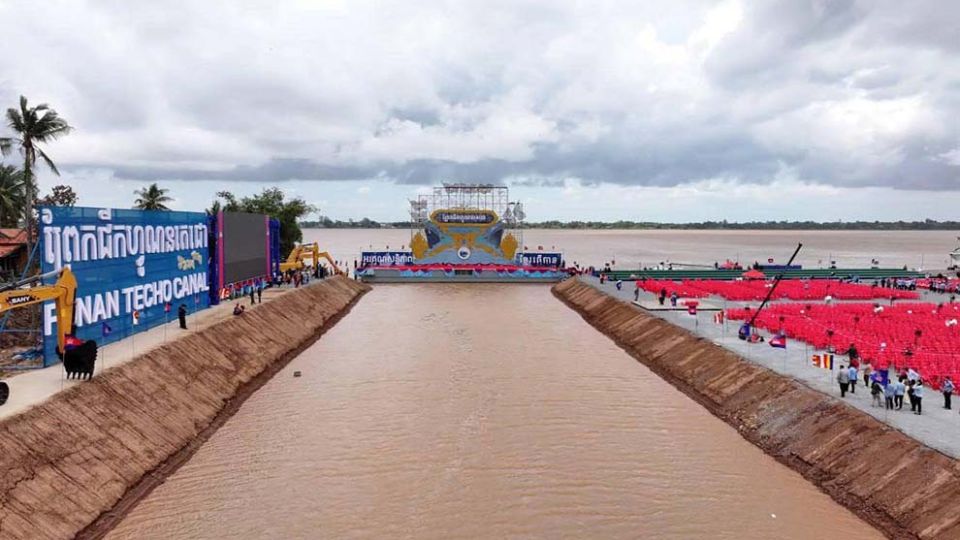August 5, 2024
PHNOM PENH – Cambodia officially broke ground on the historic Funan Techo Canal this morning at 9:09am, with more than 10,000 participants attending a ceremony presided over by Prime Minister Hun Manet.
“I hereby declare the groundbreaking for the construction of the Funan Techo Canal,” the prime minister announced.
Manet stated that the project aligns with the vision of Cambodian ancestors from 2000 years ago, during the Funan era. He noted that during that time, there were several canals serving international trade, including exchanges with India.
“This project is not just an infrastructure project, but a nationalistic endeavour,” he said, emphasising the overwhelming approval from people across the Kingdom.
“This is the first time we see such widespread support for an undertaking, even from some supporters of opposition parties,” he added.
The event featured a large-scale concert, the symbolic push of a button representing the start of construction and fireworks launched from a ferry on the Mekong River.
Simultaneously, across the country, celebrations included ringing gongs, beating drums and other festivities. In Phnom Penh, Kandal and other provinces, large concerts and traditional events such as Kun Khmer performances will take place tonight to commemorate the groundbreaking.
The 180-kilometre canal will connect the Mekong River at Prek Takeo village in Samrong Thom commune of Kandal province’s Kien Svay district to the sea in Kep. The construction, costing $1.7 billion, is set to be completed in four years.
The Ministry of Public Works and Transport stated that the investment for the project is divided into two phases. The first stage, spanning 21 kilometres, is funded by local Cambodian companies, while the second (159 kilometres) is a joint venture between Cambodian enterprises (51 per cent) and the China Bridge and Road Corporation (CRBC) at 49 per cent.
The canal will have a width of 100 metres at its upstream end and 80 metres downstream, with a depth of 5.4m. It will accommodate two-lane navigation, include three sluices and 11 bridge crossings and will be flanked by roads on either side.
Analysts believe that the canal will bring numerous benefits to the country, including reducing the cost and time of transporting goods, which currently pass through the port of Vietnam and are transported to and from the port of Sihanoukville via lorry. It will also help alleviate flooding and improve irrigation systems in the provinces it traverses.


